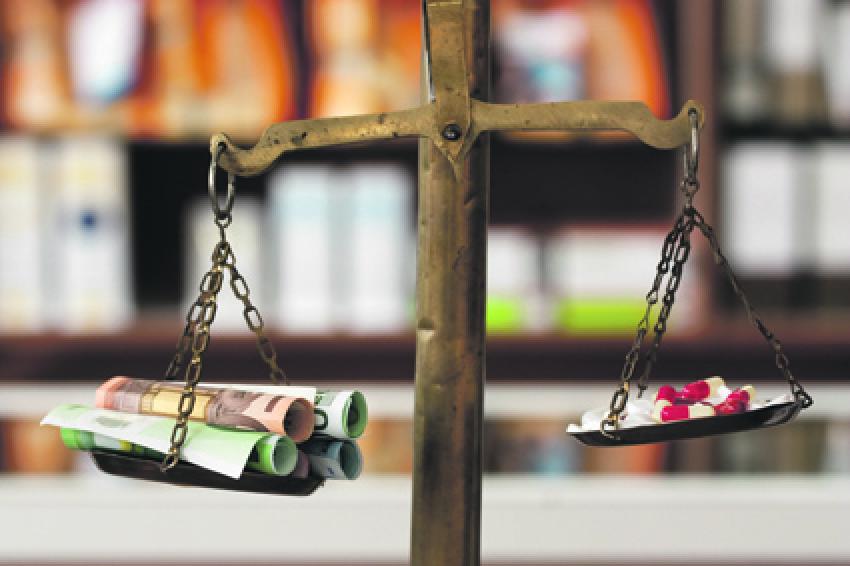Pharma vs. the World
Big Pharma Caught Between Investors and the Public
In A Clinch - Big Pharma today encounters a variety of pressures from generics manufacturers, governments, patient advocacy groups, investors, physicians and even other pharmaceutical or biotechnology firms. In contending with these pressures, companies strain to focus upon the needs of their main stakeholder, the investors or shareholders.
As the timeframe of exclusivity shortens and regulatory requirements increase, companies are faced with declining profits and decreasing brand cachet, especially in emerging markets. On top of this, they have to deal with reference pricing and stringent healthcare cost controls being set up by various governments, particularly in Europe. According to Sanofi's CEO, Chris Viehbacher, the financial situation in Europe has been costing Sanofi €200-€300 million ($262-$393 million) a year as a result of governments' healthcare spending cuts.
Sanofi has faced an interesting year in the spotlight, with their latest hurdle being Sanofi's pricing strategy in Japan coming under question. Sanofi's IPV Imovax Polio SC injection is currently priced at almost 5,500 yen per syringe, which comes at an almost 270% price premium compared to the cost of the same vaccine in the U.S. Japanese officials at the Ministry of Health, Labour and Welfare (MHLW) have issued repeated letters to the executive board of the pharmaceutical behemoth, requesting that they revise prices prior to entry into the market.
Sanofi's executives have held fast, and have issued strong statements to indicate that the price points instated for the IPVs were needed to recoup costs incurred to enter the Japanese market. However, Sanofi faces the looming threat of new entrants from domestic combinatorial vaccine manufacturers that are poised to enter the market in the very near future, and will likely usurp Sanofi as the leading IPV vaccine manufacturer in Japan. Consequently, the company has precious little time to earn substantial revenue from the sale of its polio vaccine in Japan.
In the case of vaccines, manufacturers are less and less inclined to invest because of reasons as simple as a poor business model. The vaccine segment, seen as a silver bullet by global health initiatives, is no cash cow for pharmaceutical companies. The one anomaly to this generalization would be the influenza market, which benefits from antigenic shift of the virus, thereby resulting in the need for a new annual vaccine against the viral strain in circulation. As a company attempts to recoup costs of development, one sees this reflected in the price of each vaccine. However, as manufacturers attain superior levels of efficacy with their vaccines, they are forced to reinvent the wheel to substantiate the switching costs as patients move from one therapy to another.
Market Pressures
More and more, companies like Sanofi are finding themselves pushed up against a wall by a number of different stakeholders. Sanofi is currently in a lawsuit against physician buying groups, who claim that Sanofi's contracts mimic anti-trust laws and limit healthy market competition. Novartis is also currently embroiled in a lawsuit with Indian courts over the prices of cancer drug Gleevec, with the company asserting that most patients who participated in the trial did not have to pay out of pocket for the pricey drug treatment. Gilead, a leader in HIV therapeutics, has similarly been pressured by health advocacy groups and other lobbyists to provide their therapies at a discount to patients in countries with a low annual GDP. Gilead, potentially coerced into responding to these claims, has succumbed to these external pressures and agreed to participate in the transfer of technology to promote the distribution of their drugs as generics. In August 2012, the company signed deals with Mylan, Strides Arcolab, and Ranbaxy to manufacture low-cost generic versions of its HIV drug, Emtriva (emtricitabine).
In Between Investors and The Public
Clearly, drug makers have to walk a fine line while attempting to please both investors and the public - two parties with contrasting expectations and demands. Despite the efforts of companies like Gilead and Roche at running "access" programs, which aim to make their drugs affordable for developing countries, the public still cringes at the mammoth profits announced by these drug makers every quarter. How profitable should pharmaceutical companies be in order to please both sides? Should there be a limit to their profitability, bearing in mind the expensive, lengthy, and risky drug development process? How do pharmaceutical companies prove that they care about patients if the very life-saving treatments they develop are unaffordable by those who need them the most? How involved should patient advocacy be in drug pricing, bearing in mind that with every ‘victory' they get, they come back with even more aggressive demands?
These are some of the pressing questions begging to be answered. Irrespective of the enthusiasm shown during the launch of a new drug or vaccine, it all comes down to one thing in the end - pricing. Will pharmaceutical companies stand their ground or will they yield to the demands of the public? Sanofi has chosen the former, at least for now.
Contact
GlobalData
Knowsley House
Bolton BL1 2AH
+44 1204 543537





